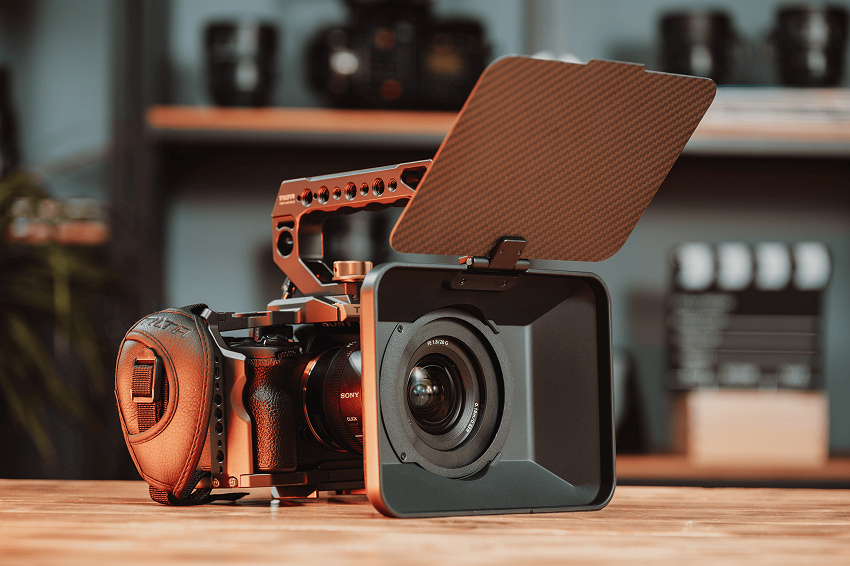
How Do I Choose a Matte Box?
If you’re a filmmaker or videographer, you understand the importance of controlling light and achieving the perfect shot. One crucial tool for achieving this is a matte box. But with so many options available, how do you choose the right one for your needs? In this article, we’ll guide you through the process of selecting the perfect matte box that complements your camera and enhances your creative vision. Let’s dive in! This article is provided by magazinzoo.com
Understanding the Role of a Matte Box
A matte box is an essential accessory for filmmakers as it helps control light, reduces glare, and prevents unwanted artifacts from appearing in your footage. It acts as a shading device, preventing excess light from entering the camera lens and causing lens flares. Additionally, it allows you to use various filters to manipulate the light and add creative effects to your shots.
Compatibility with Your Camera
When selecting camera equipment, it’s important to ensure compatibility between all components. For example, if you’re interested in purchasing a Matte Box or ND Filters, be sure to check that they are compatible with your camera and lenses. Different cameras have various lens diameters, so it’s important to choose a Matte Box or ND Filters that fits your specific lens size. You should also confirm whether the matte box is compatible with your camera’s rail system or lens support. Taking these steps will help ensure that all of your equipment works seamlessly together, resulting in high-quality footage.
Types of Matte Boxes
There are two main types of matte boxes: clip-on matte boxes and rod-mounted matte boxes.
Clip-On Matte Boxes
Clip-on matte boxes attach directly to the front of your lens. They are lightweight, easy to use, and a great option for run-and-gun shooting situations. However, they might not be suitable for larger cinema lenses due to their size limitations.
Rod-Mounted Matte Boxes
Rod-mounted matte boxes are designed for use with cinema cameras and larger lenses. They are sturdier and more versatile, allowing you to use multiple filters simultaneously. However, they require a rail system or lens support, adding to the overall setup weight.
Number of Filter Stages
Filter stages are compartments in the matte box that hold filters in front of the lens. Consider how many filter stages you require for your projects. If you only need one or two filters, a single-stage matte box will suffice. However, for more complex shots that demand multiple filters, opt for a multi-stage matte box.
Filter Compatibility
Ensure that the matte box you choose supports standard filter sizes. Common filter sizes include 4×4 inches and 4×5.65 inches. Using standard-sized filters gives you the flexibility to switch filters easily between different matte boxes and camera setups.
Material and Build Quality
The material and build quality of the matte box are vital factors to consider. Matte boxes are available in various materials such as plastic, carbon fiber, and aluminum. While plastic matte boxes are more affordable, carbon fiber and aluminum matte boxes offer greater durability and are better suited for professional use.
Swing-Away Feature
A swing-away matte box allows you to move the matte box away from the lens quickly, enabling you to change lenses without removing the entire setup. This feature is highly beneficial for situations where time is of the essence, and it helps keep your camera setup stable.
Don’t Forget the Eyebrows
Eyebrows are adjustable flaps on the matte box that help further control light and prevent lens flares. They are especially useful when shooting in bright sunlight or with strong artificial lighting sources.
Consider the Weight
The weight of your matte box and overall camera setup is essential, particularly if you’re shooting handheld or using a gimbal. A heavy matte box can add strain to your rig and impact the stability of your shots.
Price and Budget
As with any filmmaking equipment, price is a crucial factor. Set a budget for your matte box and explore options within that range. Remember that investing in a quality matte box can significantly improve the overall production value of your projects.
Conclusion
Choosing the right matte box is vital for any filmmaker aiming to elevate their work. Consider the compatibility with your camera and lenses, the number of filter stages, the material and build quality, and additional features like swing-away functionality. Finding the perfect matte box that suits your specific needs will enhance your creative control over lighting and filters, resulting in stunning and professional-looking footage.
FAQs
- Do I need a matte box for my DSLR camera?
While a matte box can be beneficial for DSLR filmmaking, it might not be an absolute necessity, especially for smaller lenses and budget productions. However, if you’re aiming for more professional results and better control over light, a matte box is worth considering.
- Can I use square filters with a clip-on matte box?
Yes, some clip-on matte boxes support square filters. Ensure that the matte box you choose has a filter holder that can accommodate square filters if that’s what you intend to use.
- Are matte boxes compatible with all lens diameters?
No, matte boxes come in different sizes, and not all are compatible with every lens diameter. Be sure to check the specifications and ensure the matte box fits your specific lens size.
- Can I use a matte box without any filters?
Yes, you can use a matte box without any filters for shading purposes. However, using filters allows you to manipulate light creatively and achieve various visual effects.
- Are swing-away matte boxes more expensive?
Swing-away matte boxes are generally more expensive than non-swing-away models due to their added functionality and convenience. However, the investment can be worth it for the ease of lens changes and camera setup stability.

Sorry, the comment form is closed at this time.